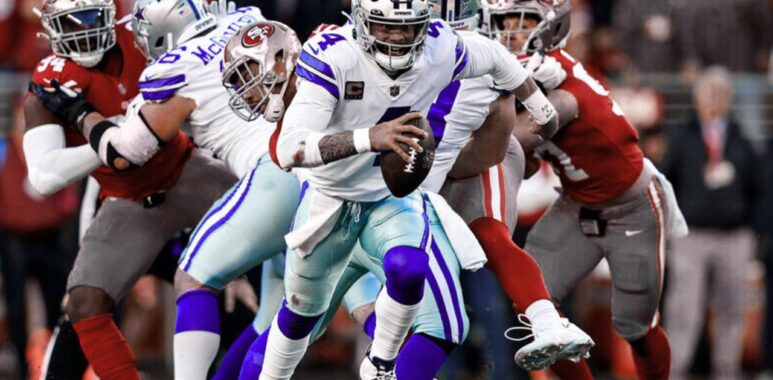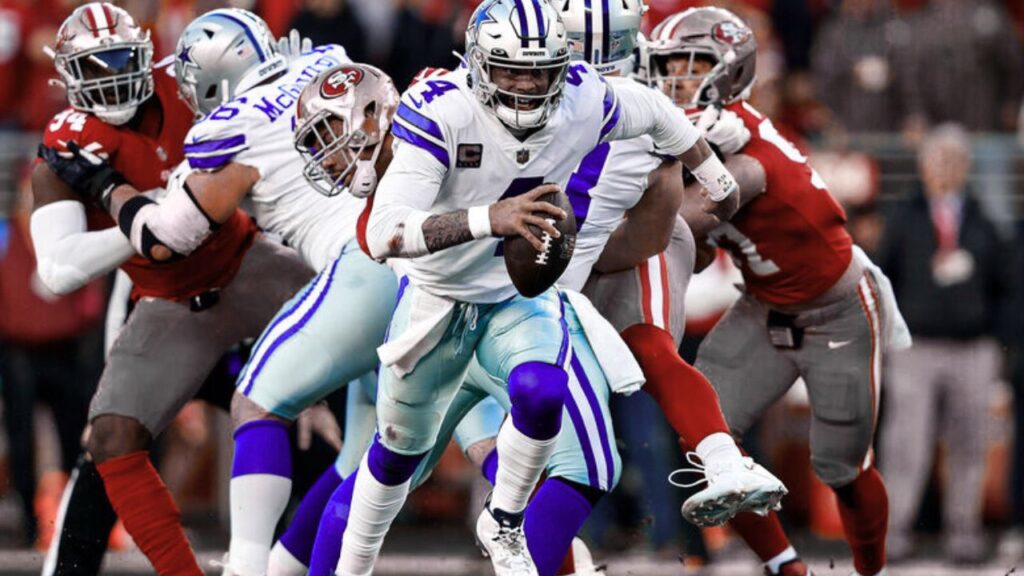
NFL 101: Beginner’s Guide to Football Rules and Scoring

Understanding the Basics of American Football
American football captivates millions with its hard-hitting action and strategic depth. For newcomers, learning how NFL games work is the first step toward enjoying this thrilling sport. NFL games are played between two teams of 11 players each, competing to outscore their opponent within four 15-minute quarters.
This beginner’s guide breaks down everything from field layout to scoring while highlighting the 7 reflexes elite players use to dominate the game. Whether you’re watching your first game or preparing for the 2025 season, these fundamentals will transform you from confused spectator to knowledgeable fan.
1. The Football Field: Dimensions and Key Markings
The rectangular playing field serves as football’s battleground. Understanding its layout helps follow the action.
Field Components Every Fan Should Know:
- Length: 120 yards total (100-yard playing field + 10-yard end zones)
- Width: 53 1/3 yards
- Yard Lines: Mark progress every 5 yards
- End Zones: Scoring areas at each end
- Hash Marks: Determine where plays begin
Players rely on the 7 reflexes to navigate this space, from receivers adjusting routes to defenders reacting to plays.
2. How Scoring Works in the NFL
Points determine winners, and the NFL features multiple scoring methods.
2025 Scoring System Explained:
- Touchdown (6 points)
- Ball carrier crosses goal line
- Receiver catches ball in end zone
- Extra Point (1-2 points)
- Kick through uprights (1 point)
- Successful offensive play (2 points)
- Field Goal (3 points)
- Kicked between uprights from any distance
- Safety (2 points)
- Tackling opponent in their end zone
These scoring plays showcase the 7 reflexes in action – from a quarterback’s quick release to a kicker’s precision timing.
3. Player Positions and Their Responsibilities
NFL games are played between two teams of 11 players each, with specialized roles on offense, defense, and special teams.
Offensive Positions:
- Quarterback (QB): Field general who passes or hands off
- Running Back (RB): Primary ball carrier
- Wide Receiver (WR): Catches passes downfield
- Offensive Line (OL): Protects QB and creates running lanes
Defensive Positions:
- Defensive Line (DL): Rushes QB and stops runs
- Linebackers (LB): Hybrid run stoppers/pass defenders
- Cornerbacks (CB): Cover receivers
- Safeties (S): Last line of defense
Each position requires specific applications of the 7 reflexes to excel.
4. Game Flow and Timing Rules
Understanding how NFL games progress helps anticipate key moments.
Game Structure:
- Four 15-minute quarters
- 12-minute halftime
- Play clock: 40 seconds between plays
- Two-minute warning: Automatic timeout late in each half
Stopping the Clock:
- Incomplete passes
- Ball carrier goes out of bounds
- Timeouts
- Change of possession
Players must employ the 7 reflexes effectively within these time constraints.
5. The 7 Reflexes That Define NFL Excellence
Success in football depends on split-second reactions. These are the critical reflexes:
Reflex 1: Quarterback’s Pre-Snap Read
- Identifying defensive formations
- Adjusting protections
- Audibling plays
Reflex 2: Receiver’s Adjustment to Throws
- Tracking deep balls
- Contorting for off-target passes
- Securing catches in traffic
Reflex 3: Running Back’s Vision
- Finding running lanes
- Making cutbacks
- Breaking tackles
Reflex 4: Defensive Reaction to Snap
- Linemen’s first-step burst
- Linebackers diagnosing plays
- Defensive backs mirroring receivers
Reflex 5: Pass Rusher’s Counter Moves
- Swatting away blockers
- Changing direction mid-rush
- Finishing sacks
Reflex 6: Special Teams Awareness
- Gunners avoiding blocks
- Returners finding seams
- Kickers maintaining form under pressure
Reflex 7: Coach’s Sideline Adjustments
- Recognizing opponent tendencies
- Changing defensive schemes
- Managing clock situations
These reflexes separate good players from legends.
6. Common Penalties and Their Impact
Rule violations can dramatically alter games.
Frequent NFL Penalties:
- False Start (5 yards): Offensive player moves early
- Holding (10 yards): Illegal blocking
- Pass Interference (Spot foul): Illegal contact on receivers
- Offside (5 yards): Defensive player crosses line early
Players must balance aggression with control, using the 7 reflexes to play fast without drawing flags.
7. Recent Rule Changes for 2025
The NFL updates rules annually to improve safety and competition.
Notable 2025 Adjustments:
- Expanded reviewable plays: More coach challenges allowed
- Modified roughing the passer: Clearer definition of illegal hits
- Kickoff tweaks: Encouraging more returns
- Overtime modifications: Both teams guaranteed possession in playoffs
Adapting to these changes tests players’ mastery of the 7 reflexes.
8. How to Watch Like a Pro
Elevate your viewing experience with these tips.
Keys to Smarter Viewing:
- Follow pre-snap adjustments
- Watch line battles in trenches
- Track quarterback progressions
- Notice defensive coverage shells
- Appreciate special teams strategy
Recognizing the 7 reflexes in action deepens appreciation for the sport.
NFL Journey Begins Here
This guide provides the foundation for understanding America’s most popular sport. From scoring basics to position roles and the 7 reflexes that define greatness, you’re now equipped to enjoy NFL games at a deeper level.
As you watch your next game, notice how these elements combine to create football’s unique drama. The more you learn, the more you’ll appreciate the incredible athleticism and split-second decisions that make the NFL extraordinary.
